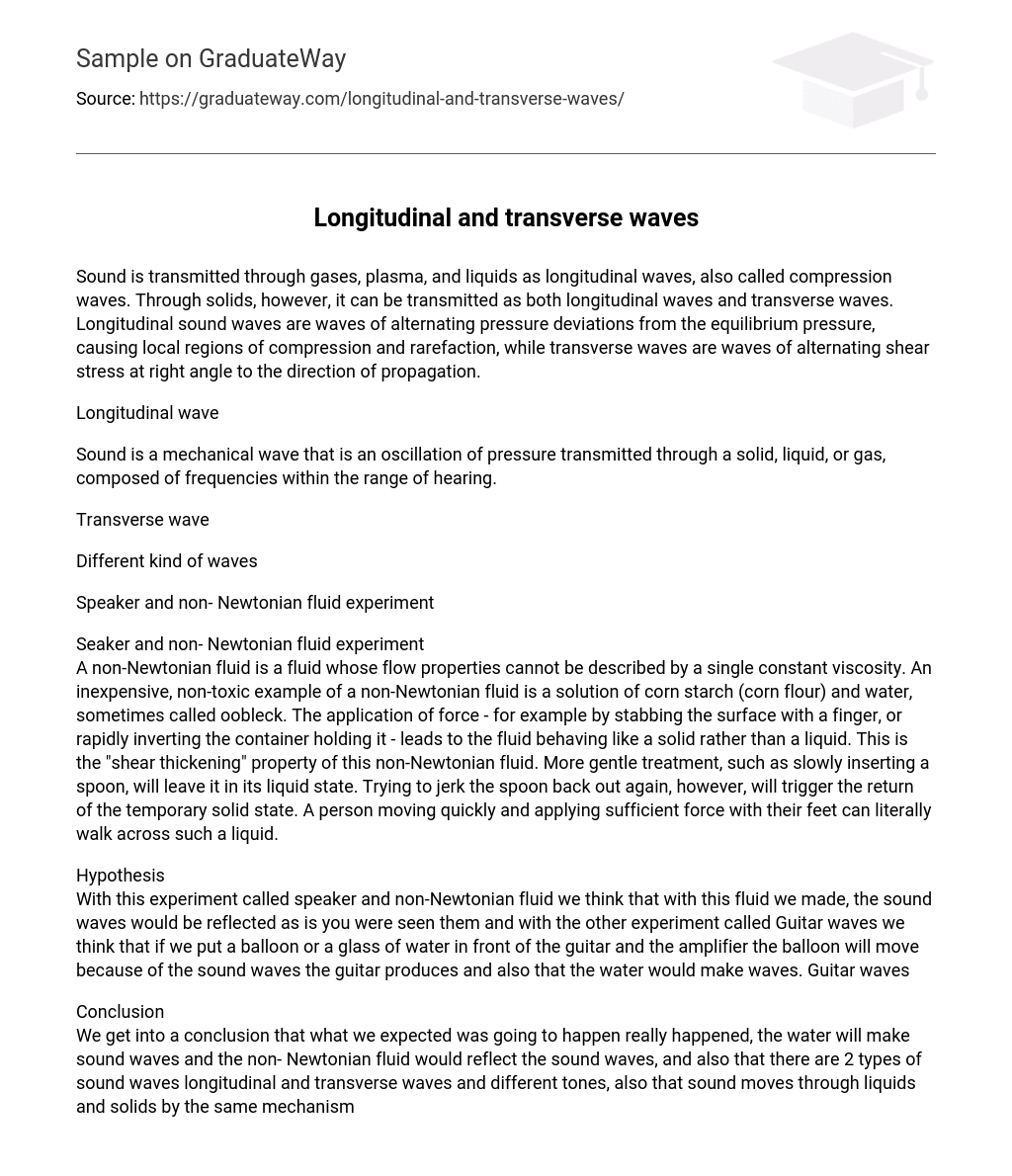Sound is transmitted through gases, plasma, and liquids as longitudinal waves, also called compression waves. Through solids, however, it can be transmitted as both longitudinal waves and transverse waves. Longitudinal sound waves are waves of alternating pressure deviations from the equilibrium pressure, causing local regions of compression and rarefaction, while transverse waves are waves of alternating shear stress at right angle to the direction of propagation.
Longitudinal wave
Sound is a mechanical wave that is an oscillation of pressure transmitted through a solid, liquid, or gas, composed of frequencies within the range of hearing.
Transverse wave
Different kind of waves
Speaker and non- Newtonian fluid experiment
Seaker and non- Newtonian fluid experiment
A non-Newtonian fluid is a fluid whose flow properties cannot be described by a single constant viscosity. An inexpensive, non-toxic example of a non-Newtonian fluid is a solution of corn starch (corn flour) and water, sometimes called oobleck. The application of force – for example by stabbing the surface with a finger, or rapidly inverting the container holding it – leads to the fluid behaving like a solid rather than a liquid. This is the “shear thickening” property of this non-Newtonian fluid. More gentle treatment, such as slowly inserting a spoon, will leave it in its liquid state. Trying to jerk the spoon back out again, however, will trigger the return of the temporary solid state. A person moving quickly and applying sufficient force with their feet can literally walk across such a liquid.
Hypothesis
With this experiment called speaker and non-Newtonian fluid we think that with this fluid we made, the sound waves would be reflected as is you were seen them and with the other experiment called Guitar waves we think that if we put a balloon or a glass of water in front of the guitar and the amplifier the balloon will move because of the sound waves the guitar produces and also that the water would make waves. Guitar waves
Conclusion
We get into a conclusion that what we expected was going to happen really happened, the water will make sound waves and the non- Newtonian fluid would reflect the sound waves, and also that there are 2 types of sound waves longitudinal and transverse waves and different tones, also that sound moves through liquids and solids by the same mechanism





